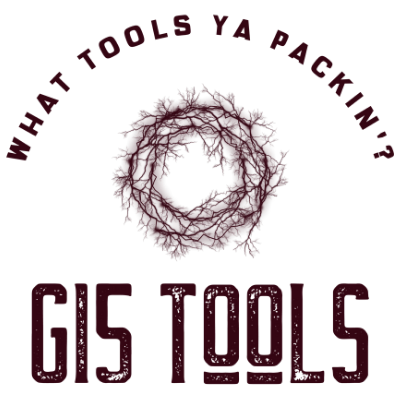Ever noticed how players seem to rage-quit at the same boss fight, yet your analytics only show a spike in level abandonment? That disconnect is exactly where Focus Group Testing becomes essential.
Today’s games are powered by data. Developers track heatmaps, session lengths, churn rates, and monetization funnels with precision. But no graph or dashboard explains why a tutorial feels patronizing, or why players lose interest just when the narrative gets good.
Focus groups close that gap. By watching real players interact with your game — live, unfiltered, and vocal — you discover insights that can’t be coded or queried. These sessions surface emotional triggers, cultural misfires, cognitive friction, and even the subtle stuff: boredom, confusion, or joy. That’s what turns a technically sound game into a genuinely enjoyable one.
Why Focus Groups Still Matter in a Metrics-Obsessed Industry
Numbers are fast. But they’re not complete. Raw data tells you what’s happening — who dropped off, how long they played, where they clicked — but only conversations reveal why.
For example:
- Your data might say 40% of players exit during the tutorial.
- A focus group will show you that the tutorial felt “slow,” “condescending,” or “too UI-heavy.”
It’s the qualitative layer that brings the full picture into focus. Even in data-driven studios, the smartest teams still sit down with players and ask:
“What didn’t feel right?”
“What made you hesitate?”
“Where did the game stop being fun?”
When used alongside telemetry, focus groups add depth, human nuance, and often, the exact words your UX team needs to hear.
Spotting Bottlenecks That Break Immersion
Even games that test well internally often hide small—but fatal—design flaws. Focus group participants surface these consistently, often within minutes.
Common culprits include:
- Tutorial drag: Too many pop-ups or condescending prompts.
- Pacing gaps: Games that burn all their excitement in the first 20 minutes and go flat afterward.
- Confusing quest flow: Objectives that seem simple to the devs but feel opaque to players.
- Monetization pressure: Paywalls or difficulty spikes designed to push purchases that end up creating resentment instead.
In one observed case, a studio couldn’t figure out why mid-game drop-off spiked. Focus group testing revealed that the game’s difficulty curve assumed the use of in-app purchases. Free players felt punished. Analytics flagged a churn pattern; players explained the reason.
The Cultural Layer: Testing for Global Resonance
In an industry where games launch globally, cultural fit isn’t optional — it’s make-or-break.
A symbol that’s neutral in one market might carry religious weight in another. A slang term that sounds edgy in English could translate into something offensive elsewhere. Even genre expectations vary: horror in Japan evokes different tropes than horror in Europe.
Focus group testing across regions allows you to:
- Catch visual or narrative elements that could backfire.
- Ensure your jokes, metaphors, and references actually land.
- Find out whether the tone feels familiar or foreign to your intended market.

Some of the most resonant games today — from horror to romance sims — succeed because they lean into regional authenticity. Cultural playtesting reveals whether you’re hitting the mark or missing it entirely.
Testing What Truly Matters: Is It Fun?
At some point, the big question becomes painfully simple:
Is this fun to play?
You can’t measure “fun” in lines of code or plot points. But you can observe it in real time.
Focus group participants will tell you — often bluntly:
“This boss fight feels like a chore.”
“I kept playing just to see what happened next.”
“This menu system makes me want to quit.”
Their gut reactions help fine-tune:
- Difficulty balance.
- Loop satisfaction.
- Onboarding tone and pacing.
- Experimentation vs. handholding.
A good focus group session often produces quotes that become internal rallying cries for design teams — insights that shape not just tweaks but core philosophy.
Beyond ESRB: Player-Centered Rating Validation
Every studio aims for a certain age rating, but players interpret content differently than regulators do. A game that barely skirts a T rating might feel like an M depending on tone, language, or visuals.
Focus group testing across age groups uncovers:
- Scenes that feel overly intense to younger players.
- UI designs that feel patronizing to older ones.
- Mechanics that accidentally mimic addictive behavior patterns.
These tests help ensure alignment between design intention and player reception — a crucial step before submission to rating boards or store approvals.
How to Structure Strategic Focus Group Testing
Good feedback isn’t automatic. To get useful insight, testing needs structure — not just “let’s watch people play.”
What high-impact studios do:
- Recruit smart: Mix core and casual players, regional representation, varied demographics.
- Moderate with purpose: Use neutral prompts and active listening to uncover authentic reactions.
- Observe body language: Frustration, boredom, and excitement often show before they’re said.
- Tag insights by system: Feedback should be mapped to gameplay systems, not just anecdotal impressions.
- Loop findings into dev sprints: Feedback is only valuable if it’s actionable.
The goal isn’t consensus. It’s to discover the edge cases, silent frustrations, and misalignments that analytics alone will never show you.
From Opinions to Outcomes
Focus group insights aren’t soft data — they’re strategic. When interpreted correctly, they drive real changes:
- A level rebalanced to feel “just right” instead of punishing.
- UI redesigned to reduce fatigue after long play sessions.
- A character’s voice lines rewritten to better match tone and region.
The key is translating talk into tasks. That’s where tight collaboration between testers, producers, UX, and narrative design matters most.
Why It Still Matters in 2025
Games are more global, cross-platform, and live-operated than ever. That also means the margin for friction is smaller. A misplaced tutorial prompt or awkward cultural cue can kill first impressions.
And in a world where players expect updates, events, and evolving stories — not just static products — feedback needs to be constant and connected. Not just a one-time focus group, but an ongoing feedback culture.
The smartest studios now treat qualitative playtesting not as a checkbox, but as a compass.
Closing Thoughts
Focus group testing isn’t a substitute for data science or QA — it’s the layer that humanizes both. It brings clarity where dashboards can’t. It makes games not just playable, but meaningful.
If your analytics dashboard shows what, and your telemetry explains when, focus group testing reveals why.
And that’s the difference between a game that works and a game that resonates.




